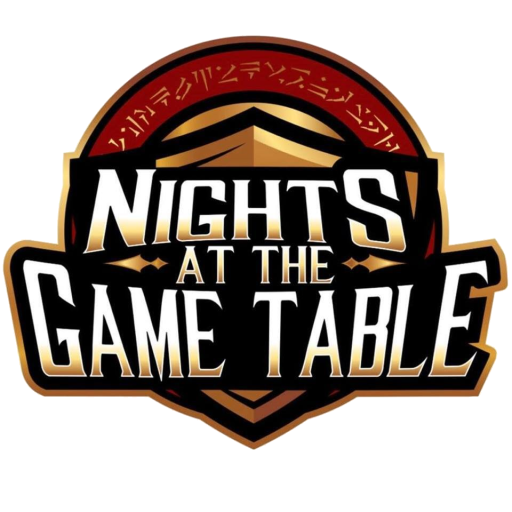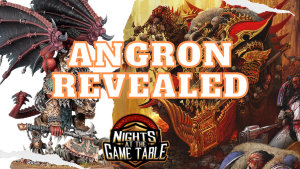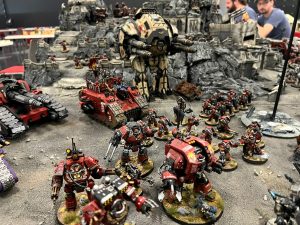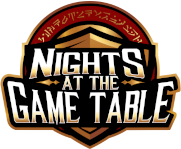Welcome to Warhammer Tactics! Today, we’re going to be looking at how to optimize the way we handle our Charge and Fight phases with step by step tutorials so you can play like a professional! We’ll begin with things that are easier to follow, and slowly work our way up to more complex scenarios.
We’ll be covering this subject over the next few weeks and at the end of the series we’ll go over some of the things you can do to fight against the techniques that were covered. Before we begin, you should grab your rulebook so you can follow along when we reference certain sections of the rules. If you don’t have your rulebook available, then you can open up the Battle Primer right off Game Workshop’s website, available here. Keep in mind that since that since these are tutorials, we’re going to be looking at optimal situations. In a real game, it’s going to be up to you to try to create these kinds of situations through gameplay.
We’re going to start with something that isn’t too complicated and forms the basis of basically everything we’ll go over the next few weeks, which is “Tagging” (getting into melee with a unit that you didn’t charge). There are other names for this, but tagging is a fairly common one and what we will use for this series. Take a look at this first photo.
 You can see that we have a unit of Age of Sigmar Witch Elves (Top), a unit of Chaos Cultists 7” away (middle unit) and a unit of Poxwalkers (bottom). In addition, we have some dice. The black and blue dice are our charge roll, and the numbers next to the black and green dice are the distance in inches for each gap between the units. Finally, we can see an arrow in red. This is the direction of our charge move, and which model we are moving.
You can see that we have a unit of Age of Sigmar Witch Elves (Top), a unit of Chaos Cultists 7” away (middle unit) and a unit of Poxwalkers (bottom). In addition, we have some dice. The black and blue dice are our charge roll, and the numbers next to the black and green dice are the distance in inches for each gap between the units. Finally, we can see an arrow in red. This is the direction of our charge move, and which model we are moving.
We’ll be using this sort of color system to help keep everything crystal clear as we go along. We’ll also be consistently working with Witch Elves, Cultists, and Poxwalkers for our examples, simply because each unit is visually distinct from one another. Just remember that these models are placeholders for all the possible models in 40K, nothing more.
When a unit makes a Charge move, we start by moving a single model in the unit. This model must end up within 1” of an enemy unit that it declared a charge against (Charge Phase, 4.4). So, we move one of our Witch Elves, and we move it across to the outside of the enemy unit of Cultists, which are our charge target. The further to the side of the enemy that you get, the more freedom you have later on. Now that we’ve moved our first model, it looks something like this:

We can see that we have moved a model and gotten within 1” of an enemy unit that we charged, This means we are free to move the rest of the unit as we please, as long as we don’t break unit coherency. The stipulation for ending up within 1” of an enemy unit that we declared as a charge target only applies to the first model that we move as part of a charge move. So, we move the rest of our Witch Elves 9” to the outside of our first model, which looks like this:

Now, we’ve completed our charge move. We’re going to zip ahead a bit and move onto the Fight Phase. Since our Witch Elves charged, they get to go first. They start by piling in 3”, ending closer to the nearest enemy model. I’ve marked how the first two Witch Elves would pile in, in red. The other two will simply follow behind, which should leave you with this:
 As you can see, we’ve managed to get our entire unit of Witch Elves into melee with the Cultists while also circling around them. Again, the Witch Elves and Cultists are simply stand-ins for the myriad units in 40K. When trying to use this tactic, or the other tactics that we will go on to cover over the next couple weeks, it’s critical that you completely wipe out the unit you’re in combat with. Leaving even one model alive will completely shut down most of the strategies that we cover. Make sure you send in the right unit for the job! That being said, let’s move on to our next photo:
As you can see, we’ve managed to get our entire unit of Witch Elves into melee with the Cultists while also circling around them. Again, the Witch Elves and Cultists are simply stand-ins for the myriad units in 40K. When trying to use this tactic, or the other tactics that we will go on to cover over the next couple weeks, it’s critical that you completely wipe out the unit you’re in combat with. Leaving even one model alive will completely shut down most of the strategies that we cover. Make sure you send in the right unit for the job! That being said, let’s move on to our next photo:

We’ve killed all the cultists, and that brings us to the last step of our activation, which is Consolidating. Consolidating works just like Piling in, which means we get to make a 3” move, as long as that move has us end closer to the nearest enemy model. This is why it’s critical for you to completely wipe out the first unit that you fight with. If you leave even one model behind, the remains of the unit you charged will be closer than the enemy unit you want to Tag, which prevents you from being able to Consolidate towards the enemy (Fight Phase 5.6). For this tutorial, our Witch Elves slaughtered all the Cultists, which leaves them free to consolidate towards our Poxwalkers. They take their 3” move for their Consolidate, and Consolidate into the enemy Poxwalkers.
 As you can see, our Witch Elves have successfully gotten into melee with the enemy Poxwalkers, tying them up for a turn. We are able to move within 1” of them because there are no restrictions on Pile In and Consolidate moves, other than that they must go towards the nearest enemy model, on a model by model basis. Since we have definitely ended up closer, our Consolidate move is legal, and now we have tied up the enemy stopping them from shooting us for a turn. That concludes our lesson on tagging.
As you can see, our Witch Elves have successfully gotten into melee with the enemy Poxwalkers, tying them up for a turn. We are able to move within 1” of them because there are no restrictions on Pile In and Consolidate moves, other than that they must go towards the nearest enemy model, on a model by model basis. Since we have definitely ended up closer, our Consolidate move is legal, and now we have tied up the enemy stopping them from shooting us for a turn. That concludes our lesson on tagging.
Now we’re going to look at one of the most important tools available to you, which is “Pinning”. Pinning is the act of tagging an enemy unit in such a way that the enemy unit can’t fall back, which forces them to stay in melee. Let’s take a look at our set up.

As you can see, the setup is rather similar to our first tutorial, except our Witch Elves are right next to the Cultists. This is because you need a lot of extra movement to pull this off. For our tutorial, I’ve chosen to start only 2” away and given them a 5” charge roll. The exact requirements are going to depend on how close the unit you want to pin is to the unit you are charging. Because of this, you won’t always be able to go for a Pin, unless you begin your turn with the enemy right in your face.
Part of mastering the skill of pinning simply comes from practice and learning to identify when you can go for it. For our example, our objective will be to pin the Poxwalkers with our Witch Elves. We’ve made our charge roll of 5”, and I’ve marked the path that our first model is going to take to get within 1” of their charge target, which is the cultists. After we make that initial move, you should have something similar to this:

We’ve made contact with the enemy in a very similar fashion to our first example. Now, we’re going to charge the rest of the Witch Elves around the side of the Cultists, ending up more or less behind them. The red lines show roughly where the first couple of models will end up. The remaining models follow suit to maintain unit coherency. When going for a pin, it’s important to take it extra wide. You actually want a good chunk of your unit too far away to initially contribute attacks. When we pile in, we’ll end up able to make attacks while closing in on our pin target.

We’ve completed our charge move, and hooked around the side of the enemy. Our pile ins are going to be extremely important, because we have to move close enough to the enemy unit to pin them, while having them be legal Pile In moves. As you can see, 3 of the Witch Elves have red lines and an X coming off them. These 3 Witch Elves will go on to make our pin on the Poxwalkers. The directions they are taking are approximately where the model is headed. Each will end up closer to the nearest enemy model to them, which is the cultist on the left. However, it will also bring them closer to the Poxwalker on the left, which is important. Let’s see what this looks like after our Pile In:

This is easily the most technical part of our pin. Note that this tutorial was done with essentially as little bonus movement as possible. In other words, if our 5” charge was only 4”, we probably wouldn’t be able to make the pin. If we had rolled a 6 or more, it would grow much easier to force a pin. Our 3 Witch Elves that are going to make the pin shuffled right and down. What’s important here is that they shuffled to the right more than they shuffled down, this way they ended up closer to the Cultists than they began, while also getting closer to the Poxwalkers. In addition, all the Witch Elves are either within 1” of an enemy model, or within 1” of a Witch Elf within 1” of an enemy model, which allows all 5 of your Witch Elves to attack. Now we make our attacks, and wipe out the enemy Cultists. That leaves us with this:

Just like with tagging, it’s critical to completely wipe out the enemy you actually charge. If you don’t, than they will be closer than your pin target, making you unable to go for the pin since your 3” Consolidate has to finish closer to the nearest enemy model. Now that we’ve wiped the enemy out, it’s time for us to go for the pin. At this point, pinning is rather similar to tagging, except that you have a specific goal in mind. We have 3 different Witch Elves that are near the left side of the enemy Poxwalkers. Each of them has a line showing off their movement, which will result in them forming a sort of triangle around the enemy poxwalker. Let’s complete our Consolidate, and see what our last photo for today looks like:

With our Consolidate moves finished, the enemy Poxwalkers have now been successfully pinned. This triangle shape prevents the enemy Poxwalker inside the triangle from moving, as if it moves at all it will push the Witch Elves out of the way, albeit very slightly. However, when a model moves, it can’t be moved through other models, period, unless of course it has the FLY keyword (Movement Phase, Moving). Since the enemy can’t move that Poxwalker, it can’t fall back, which means that our Witch Elves are stuck in combat with the enemy Poxwalkers, and can’t be shot. We can then slaughter the enemy Poxwalkers on their turn, and be free to move around on ours.
Pinning is effectively a more complicated and strict version of Tagging. It should be noted that Tagging a flying unit is usually pointless, since it can fly away and shoot with no penalty, and it’s impossible to pin a flying unit, since the unit can just move out of your pin without a problem. Despite these limitations and the technical requirements involved, tagging and pinning units are one of the most important skills for any 40K general to learn. The ability to disrupt the enemy turn or even completely rob them of shooting your dedicated melee unit for a turn can be completely debilitating for them.
That’s all for this week. Make sure you check out next week’s article where we’ll be going over how you can charge through an enemy unit, and some cool tech available to units that can fight multiple times per Fight phase!
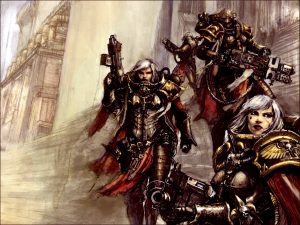
Warhammer 40k Winning Lists June 11th Edition
With summer in full swing, we see a refreshing number of tournaments kick back up globally, ranging from 3 to 7 rounds
